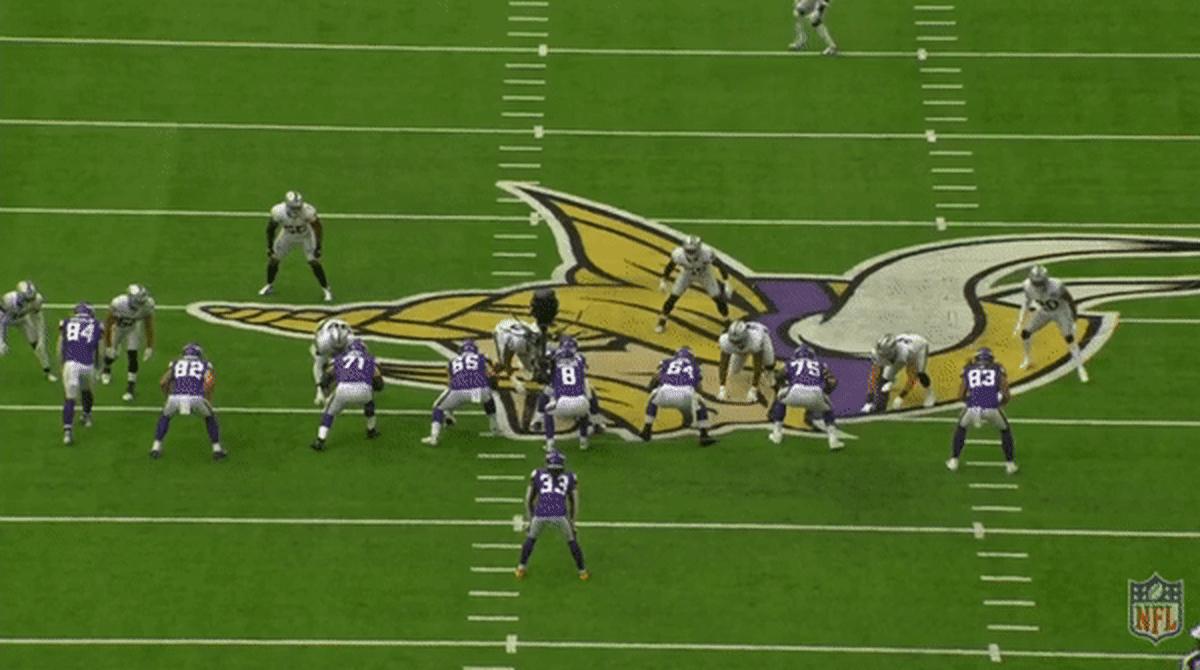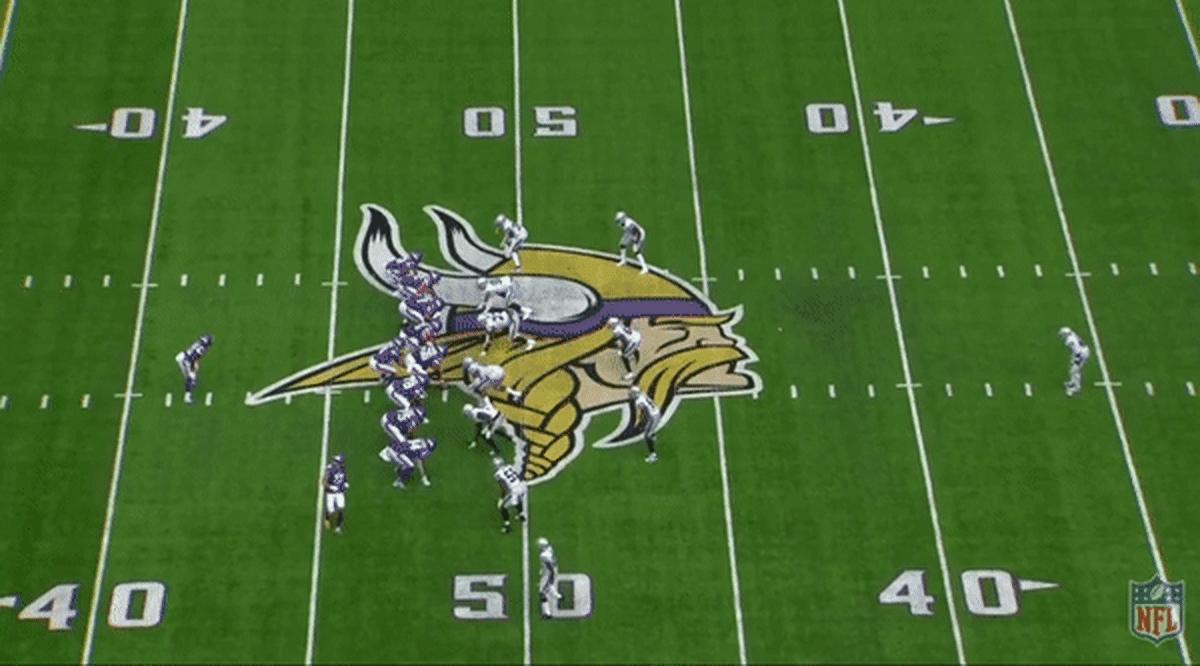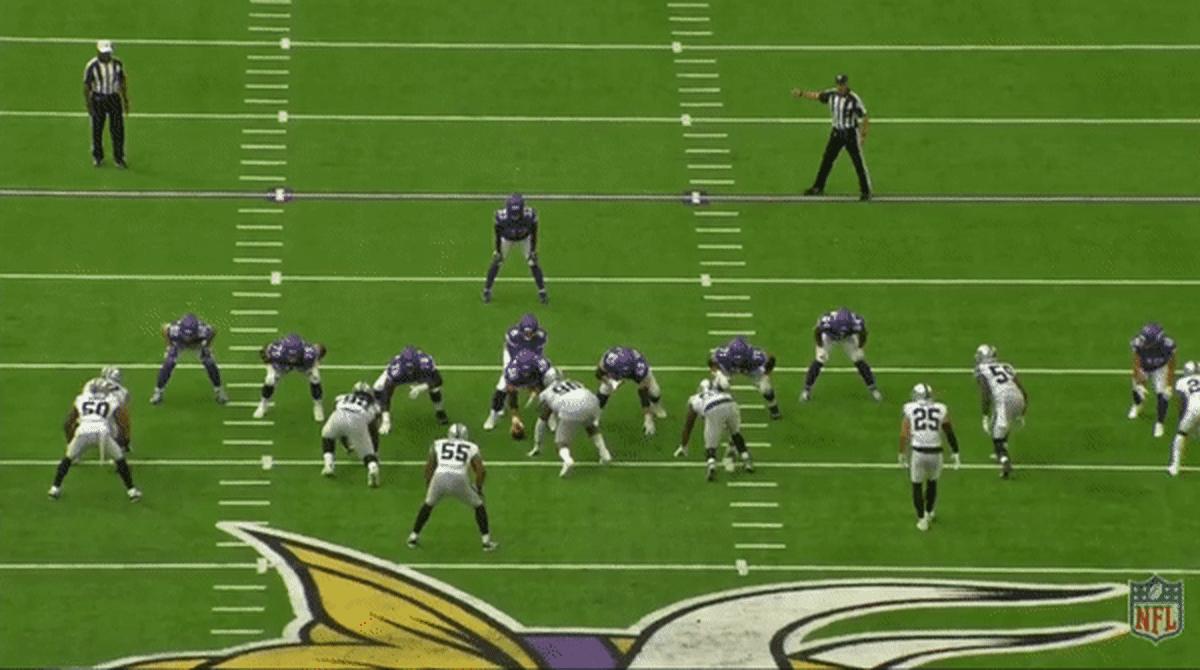Irv Smith Jr. Is The Vikings' Future (And Present?) At Tight End

The transition from college football to the NFL is rarely an easy one. The speed of the game, the intricacies of the playbook, and the diverse responsibilities a player has to deal with on a play-to-play basis are all challenges that take time to get used to.
That's especially true at tight end, where you could be zone blocking for a run play on first down, running a timing route against man coverage on second down and blocking a pass rusher on third down. It's especially true if you're a barely-21-years-old tight end who played just 24 college games.
That's the transition Irv Smith Jr. has had to grapple with since the Vikings' took him in the second round out of Alabama, making him their highest-drafted tight end since Kyle Rudolph in 2011. Back in training camp, when Smith was still just 20 years old, assistant head coach Gary Kubiak said the rookie was "swimming" in information.
After breaking out with three catches for a team-high 60 yards against the Raiders, it's safe to say Smith has come a long way.
“The beginning of camp, it was just a lot thrown at me," Smith said. "The more I got comfortable, getting reps with everything, I could go out there and play faster. Once you can go out there and play fast, be confident, the sky’s the limit.”
Through the season's first two games, despite playing almost half of the Vikings' offensive snaps, Smith had only caught one pass for a loss of a yard. In Week 3, his three receptions showed that the sky is indeed the limit for what he can become in this offense.
The first catch, a 20-yard gain up the seam, was a great example of Smith's speed and route-running prowess. Kirk Cousins has praised the rookie's "movement skills."

He is able to get so open over the middle because of how well he sells the route, acting like he's going to break towards the outside before cutting back inside. The route is so good that the safety in man coverage almost falls down.
"The coaches, they’re learning me and what I can do well to help this team," Smith said. "The more they get to see me, the more that I’m out there doing, the more I can help this team.”
His second catch, this one for 26 yards in the third quarter, was again a result of excellent route-running. This time, the Vikings run play-action and Smith fakes inside before cutting to the sideline for a big gain.

“Teams, since we’ve been running the football so well, they want to buy into the run game," Smith said. "If they do that, we have play-action and different shots that we can take to capitalize off of that."
His third catch was another example of how the Vikings can utilize their new weapon out of play-action. Instead of running a downfield route, this time the play allowed Smith to catch the ball in space and run with it.

Notice what Smith does when faced with the Raiders' Gareon Conley, No. 21. Many players would've probably ducked out of bounds to avoid contact, but Smith cuts back inside to try to gain additional yardage, making one man miss before several defenders bring him down. Running with the ball after the catch is something Smith loves to do and has been doing since college.
“That’s honestly my favorite thing, to get the ball in some space and try to make somebody tackle me," he said. "I try to make as many guys miss as I can, whether it’s juking them or running them over or running past them."
Chad Beebe was flagged for an illegal block on the play, turning it from a 26-yard gain to just 14 yards. Still, short passes could be a great way to continue to get Smith involved in the offense going forward. Tight end screens and dump-offs are a fairly regular part of the Vikings' offense, and the athletic Smith can do a lot more with them than Rudolph can at this point in his career.
Rudolph will continue to play a major role because of his far-superior blocking ability and deep familiarity with the Vikings' offense. But Week 3 was the first game in which he didn't play every snap, and it was also Smith's first game playing over 30 snaps. Plus, the two can co-exist; given their receiving depth and the way Kubiak wants to play, the Vikings will continue to run a ton of two-tight end sets.
Smith is the future at the tight end position for Minnesota.
He's also a big part of the present.
